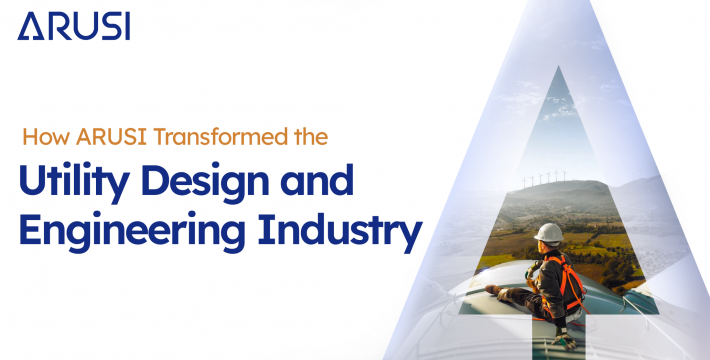
Industries rarely remain static – new innovations and technologies inevitably emerge that profoundly impact established processes and workflows. The utility design and engineering industry is no exception. Over the last decade, several new technologies have been introduced that have radically transformed standard practices in this sector. One innovation that is significantly disrupting prevailing utility design and engineering methodologies is automated robotic utility surveys and inspections (ARUSI).
In this article, we will provide an overview of traditional utility design, examine some of the limitations inherent in conventional approaches, discuss how ARUSI is overcoming these restrictions through automation, and elaborate on the transformative impact this technology is having across the entire utility engineering services domain.
The Standard Workflow for Utility Design and Engineering
Utility design and engineering incorporate various processes necessary for installing public infrastructure services. This includes aspects such as surveying land to map underground assets, designing utility networks like water mains or gas pipelines, and creating construction plans to support project implementation.
Execution of these tasks typically involves manual and labor-intensive methods. For example, surveying underground utilities necessitates going onsite and physically walking the route to detect assets using electromagnetic locators. Survey data must then be compiled by hand to create maps documenting the positioning of subterranean structures.
Design and modelling utility networks similarly rely on traditional computer-aided design (CAD) software that requires extensive human oversight. Repeated site visits are also needed during the design phase to visually inspect routes and validate layout plans. This hands-on approach ensures accuracy but is also time-consuming and costly.
The Drawbacks of Conventional Techniques
While tried-and-tested, these customary utility design and engineering practices have inherent limitations. They are heavily reliant on the physical presence of personnel on work sites, making processes extremely labor dependent. The quantity and quality of outputs are consequently constrained by resource availability.
Safety is also a major concern with personnel needing proximity access to active roads or rails to carry out surveys. Moreover, the accuracy of manually captured utility data varies significantly depending on individual aptitude. Achieving high levels of precision repeatedly over large areas is enormously challenging without standardization.
Design outcomes are similarly inconsistent based on the proficiency of the engineer. Since everything is done manually, even minor tweaks to layouts require reworking drawings from scratch—an inefficient utilization of CAD drafting efforts. Such reliability and quality control issues drastically impact project risk and assets management further down the line.
The bottom line is that existing utility design and engineering solutions decidedly require optimization and modernization. Human-led approaches minimize errors but remain labor-intensive, inconsistent, unsafe and difficult to scale. The industry is ripe for disruption through new technologies that automate tasks and enhance quality.
ARUSI Implements Automation to Transform Workflows
Automated robotic utility surveys and inspections (ARUSI) provide exactly such cutting-edge capabilities. As the name suggests, ARUSI incorporates autonomous drones and AI-powered software to execute utility design and engineering functions. UAVs fitted with an array of sensors including LiDAR survey equipment can autonomously map underground infrastructure rapidly and safely.
Sophisticated data analytics algorithms then instantly process the copious volumes of captured utility survey data to generate highly accurate 3D digital twin models. These geospatially referenced virtual replicas include precise mapping of all buried assets and can be used for automated analytics and insights.
ARUSI leverages these rich utility network models to conduct fully automated utility engineering design using generative algorithms. Layouts are programmed keeping in mind various industry-specific planning standards and best practices. Since everything is digital, designs can be quickly simulated and optimized prior to deployment.
By automating utility surveys as well as subsequent planning and modelling processes through ARUSI, tremendous efficiency enhancements are unlocked. Work that previously took weeks can now be accomplished in days with substantial improvements in output quality. Instead of being constrained by manual capacities, tasks can scale almost infinitely allowing enormous quantities of infrastructure to be mapped and designed consistently.
Transforming the Utility Engineering Services Paradigm
The uptake of ARUSI-centric solutions is decidedly transforming utility engineering services across the sector. Accurate, high-resolution digital twins of buried assets previously unimaginable are becoming commonplace through rapid large-scale surveying. Risk is drastically minimized with the precise documentation of all underground utilities and their real-time condition.
Utility network planning and modelling is also greatly enhanced with generative design systems autonomously creating iterative layouts and simulations for review. This combined standardization and acceleration of surveying alongside engineering is set to completely overhaul industry conventions.
Specifically, ARUSI transitions organizations from labor-intensive manual processes to highly automated and optimized digital workflows. This shift is also helping overcome chronic bottlenecks across project lifecycles. More significantly, though, the elevated speed, consistency, scalability and quality radically boosts productivity and safety.
Instead of relying purely on fallible manual means, utility engineering services are incorporating revolutionary automation and AI-driven techniques for unprecedented outcomes. With competitors racing to implement solutions such as ARUSI, organizations failing to follow suit risk losing relevance in such a rapidly evolving industry.
Closing Thoughts
New technologies consistently shape and direct progress across most industries by optimizing or fully automating incumbent methodologies. The same digital transformation is now being witnessed in utility design and engineering through pioneering solutions centered around ARUSI. By blending autonomous drones, LiDAR sensors and AI-powered analytics, ARUSI delivers vast data-driven improvements.
Utility engineering services stand to become more efficient, consistent, scalable, and rich in insights than ever before. While some may resist this shift from conventional manual workflows, automation and intelligence are the future for accelerated digital engineering. Any firm seeking to sustain itself at the forefront of this sector needs to strongly consider novel ARUSI-based offerings to upgrade legacy toolsets. With definitive enhancements in quality, safety, and productivity, ARUSI heralds the next generation of utility design and planning.


